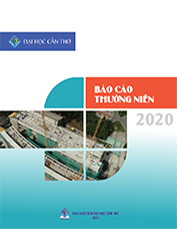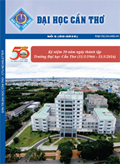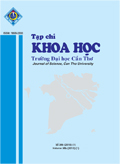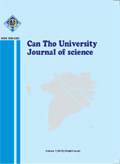ABSTRACT
Technical and economic feasibility of integrated agriculture-aquaculture-forestry farming systems in the buffer zone of U Minh Thuong National Park was analysed. The analysis is of great importance to appropriate solutions for improving livelihoods of local people while safeguarding bio-diversity of the buffer zone and conserving the core area of the National Park. Results showed that productivity of fish of integrated agriculture-forestry-fishery farming system are about 105-137kg/ha/year. Economic return of integrated agriculture-forestry-fishery farming system is lower than that of system of rice shrimp. The profit of rice shrimp farming system and two rice-shrimp farming system in 2006 is 10.8 and 19.4 million dong/ha, respectively. Economic return of integrated farming-systems showed that maintain agriculture-forestry-fishing farming system only provide food and saving a little money for household in the buffer area. Assumptions balance economic return between rice-shrimp farming system and rice-fish farming system; Australian Melaleuca-fish farming system in order to analyze the economic return shows that rice-fish farming system; Australian Melaleuca-fish farming system can be a solution instead of developing rice-shrimp farming system. Maintaining ecology of buffer area by integrated agriculture-forestry-fishery farming-system have to support policies for farmers who live in the buffer areas as capital, reduced tax of agriculture, cultivation techniques of rice-fish, Australian Melaleuca. Priority solutions other support for members of households live in the buffer area as Priority of education, health care to reduce the heavy financial to maintain integrated agriculture-forestry-fishery farming-system aimed to protect resources and ecological in core areas of U Minh Thuong National Park .
Keywords: Bio-diversity, integrated agriculture-aquaculture-forestry farming, technical and economic feasibility
Title: Technical and economic feasibility of integrated agriculture-aquaculture farming systems in the buffer zone of U Minh Thuong National Park
TóM TắT
Báo cáo phân tích tính khả thi về kỹ thuật và kinh tế của các mô hình nông lâm ngư kết hợp ở vùng đệm của Vườn Quốc Gia U Minh Thượng. Kết quả phân tích này có ý nghĩa quan trọng trong việc tìm ra giải pháp thích hợp để cải thiện sinh kế của người dân và duy trì sự đa dạng sinh học của vùng đệm và bảo tồn Vườn Quốc gia. Kết quả năng suất của các loại cá đồng trong các mô hình nông lâm ngư kết hợp là 105-137 kg/ha. Hiệu quả kinh tế của mô hình nông lâm ngư thấp hơn so với mô hình lúa tôm. Lợi nhuận của mô hình canh tác lúa-tôm và 2 lúa- tôm trong năm 2006 là 10,8 và 19,4 triệu đồng/ha, tương ứng. Hiệu quả kinh tế của mỗi mô hình cho thấy là duy trì mô hình nông lâm ngư kết hợp chỉ có thể đảm bảo cung cấp lương thực-thực phẩm và tích luỹ tối thiểu cho nông dân vùng đệm. Các giả định cân bằng hiệu quả kinh tế giữa lúa tôm và mô hình lúa-cá và Tràm úc-cá được đặt ra để phân tích hiệu quả kinh tế của mô hình lúa-cá và mô hình tràm úc-cá cho thấy hai mô hình này có thể là một giải pháp phát triển thay vì đẩy mạnh mô hình lúa- tôm. Duy trì sinh thái vùng đệm bằng các mô hình nông lâm ngư kết hợp cần có các chính sách hỗ trợ người dân trong vùng đệm như vốn, giảm thuế nông nghiệp, kỹ thuật canh tác lúa-cá, tràm. Các giải pháp ưu tiên khác hỗ trợ cho các thành viên của hộ dân trong vùng đệm về giáo dục, y tế nhằm giảm gánh nặng tài chính để có thể an tâm duy trì các mô hình nông lâm ngư kết hợp để bảo vệ nguồn tài nguyên và sinh thái vùng lõi.
Từ khóa: nông ?lâm-ngư kết hợp; kỹ thuật và kinh tế; U Minh Thượng






